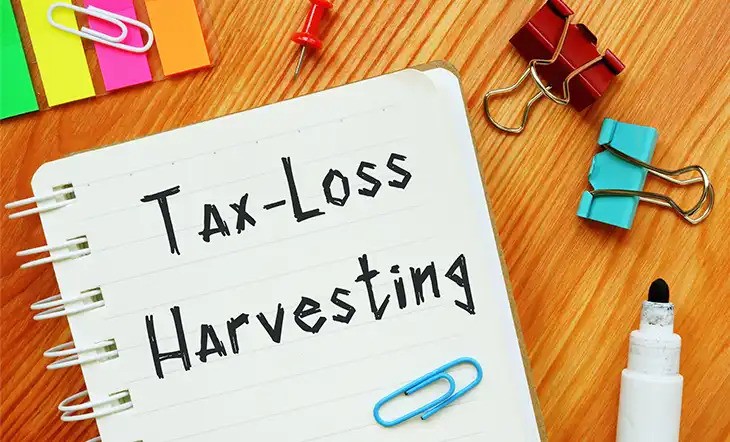Is SSIRS (Spend Safely in Retirement Strategy) The Right Retirement Strategy for You?

Generally, most people look forward to their retirement years. However, retirement can be a golden period only for those with a significant retirement nest egg to support their expenses. Considering the bare minimum Social Security support and the rumored bankruptcy of the Social Security benefit scheme, it is important for retirees to consider creating a retirement income stream independent of Social Security benefits. Presently, more than 64 million people rely on Social Security benefits to sustain their living expenses during retirement. Typically, an average retiree only gets about $18,000 annually from the Social Security fund. However, even this low income is the source of livelihood for 62% of the retirees in the present. In 2020, the average monthly Social Security paycheck was only $1,523, whereas, in 2021, the check was increased by $20, upping the monthly Social Security payment to $1,543.
Such low financial support from Social Security is a concern for retirees, especially in the wake of the rising life expectancy numbers. According to Money Guide, a married woman aged 65 years has a 50% chance of living over the age of 90 years. This implies that a general retirement period is likely to last for 25 years against a previous retirement span of 13 years. A long retirement period means a retiree needs a retirement corpus that can last for two decades or more. Even more important is to ensure the sum of money is smartly used, ensuring it lasts longer. As a retiree, it is advisable to create an effective saving and spending plan to eliminate the risk of outliving your savings.
Several retirement program ideas are advertised as the most effective for retirement spending. However, no one thumb rule fits all. Every retiree is different. Your financial requirements and goals are not similar to your peers. Hence, it is advisable to be well-informed and analyze a strategy to check if it fits your retirement requirements and resourcefully eliminates the fear of outlasting your retirement nest egg.
In 2017, the Stanford Center on Longevity studied 292 retirement income strategies to find the most successful way for retirees to withdraw their savings and spend their money. The comprehensive strategy was named ‘Spend Safely in Retirement Strategy (SSiRS)’. The SSiRS performed favorably than 292 other strategies. The founding philosophy of this strategy was to use Social Security benefits and supplement them with an automatic, stable retirement income. SSiRS also aims to maintain a healthy balance between different retirement goals, such as expected lifetime income, desired liquidity in retirement, and protection against risks, including longevity, inflation, and investment portfolio performance. If you wish to learn more about the SSiRS strategy to know if it’s a suitable retirement strategy for your needs, consult with a professional financial advisor who can clear any doubts that you may have.
Here is everything you need to know about SSiRS and if it is the right retirement strategy for you:
What is SSiRS?
SSiRS is a one-in-all retirement strategy, which aims to enable middle-income retirees (with $1 million or less as retirement savings) to generate a steady earning from their IRA (Individual Retirement Account) or other employer-sponsored retirement savings vehicles like a 401(k). The SSiRS strategy was created after a comprehensive assessment of over 292 retirement strategies.
The SSiRS supports middle-income individuals in making informed life decisions, including:
- When to retire?
- Whether to take full retirement or opt for semi-retirement?
- When to take Social Security withdrawals?
- How to use retirement savings to ensure they last a lifetime?
- Is it critical to cut down on living expenses during retirement?
In 2019, the Stanford Center on Longevity, in association with the Society of Actuaries, assessed the feasibility of the 2017 SSiRS report. The report titled ‘Viability of the Spend Safely in Retirement Strategy’ stated that SSiRS was a feasible framework for an average retiree.
As a retiree, the SSiRS strategy aims to help you optimize Social Security benefits and deploy your retirement savings efficiently. This involves wisely structuring your retirement account withdrawals and using your Required Minimum Distributions (RMDs) to offset the risk of inflation and longevity. The objective of the SSiRS approach is to create a periodic retirement income from retirement accounts along with earnings from target-date funds, balanced funds, and low-cost stock index funds. The SSiRS also focuses on delaying retirement and Social Security withdrawals to increase ultimate retirement income.
That said, the SSiRS is not a mandate. The approach allows you to use several refinements that reflect your personal financial goals and life situations. You can also deploy the SSiRS policy to make robust plans that take care of your cash-flow needs and emergency reserves. SSiRS tactics help you implement a retirement income system without any help from a financial advisor. The strategy also reduces your exposure to market volatility while enabling your corpus to keep pace with the rising inflation.
What are the components of the SSiRS strategy?
Typically, there are two components of the SSiRS strategy, including:
- Optimizing Social Security benefits:
- Generate retirement income from savings:
According to Steve Vernon, the co-author of ‘Viability of the Spend Safely in Retirement Strategy’, the SSiRS approach assumes Social Security as one of the best retirement income generators for middle-income retirees. Moreover, if you are in your 20s and 30s and presently working, Social Security will form at least 60-80% of your retirement income. The objective behind assuming Social Security as the perfect retirement income generator is the scheme's ability to protect against inflation. Each year, the Social Security Administration considers the rising inflation to determine the Social Security benefits. Social Security checks are increased based on the annual price change of goods and services per the CPI (Consumer Price Index). In 2021, the Social Security benefits for an average retiree were increased by 1.3% to absorb the cost-of-living adjustment or COLA. Apart from providing a hedge against inflation, Social Security benefits are also safe from any market volatility, implying that a stock market crash has no bearing on your retirement paycheck. Further, the Social Security amount is credited directly into your bank account, and in some circumstances, a portion of the Social Security amount is not subject to income taxes. Hence, the SSiRS strategy primarily focuses on optimizing Social Security benefits to fulfill your retirement expenses. The best way to do this is by delaying the withdrawal of your Social Security funds until you are 70 years old. Officially, you can start taking your Social Security payout at the age of 62. However, you are entitled to your full benefits only when you achieve your full retirement age. The full retirement age norms have changed in 2021. Earlier for people turning 62 in 2020, 66 years and eight months was the full retirement age. The Social Security changes in 2021 increased the full retirement age by two months each until you reach the age of 67 years. Hence, if you turn 62 in 2021, your full retirement age per the new Social Security norms is 66 years and ten months. Everyone born in 1960 or later will achieve full retirement age at 67. It is vital to understand the concept of full retirement age to effectively delay Social Security payouts. The SSiRS strategy suggests taking Social Security, not before the age of 70. If you delay Social Security benefits until 70 years, you can boost your Social Security payouts by more than 32% if you begin your withdrawals at your full retirement age. Postponing your Social Security later than 70 years has no advantage. In contrast, if you take your Social Security payment at 62, you can expect a 29.17% reduction in your full retirement age paycheck. One way to delay Social Security withdrawals is by impeding your retirement. Hence, consider working for a longer period than planned. If you wish to retire before 70, you can still postpone Social Security payments until 70 by working part-time and generating sufficient income to sustain your retirement living expenses until 70 years. If you do not wish to work part- or full-time until 70, you may use the Social Security bridge payment option. As per the Social Security bridge concept, you can take drawings from your retirement savings accounts like an IRA or a 401(k) up to an amount equivalent to your Social Security payments. Keep this money in a separate account, preferably a new investment account. However, remember this retirement transition fund so that you are not left wondering if you have retirement money elsewhere. Also, be mindful of using this money for short-term investments, such as short duration bonds, money market funds, and more. The exact amount you withdraw and redirect to your retirement bridge account depends on your standard of living. You can keep aside a sum sufficient to cover living expenses of four or five years or longer, whatever is required to delay Social Security benefits. According to the SSiRS strategy, optimizing Social Security benefits can form up to 80% of the total retirement earnings for middle-income retirees. This, in turn, implies that 80% of the retirement income is secure against inflation, longevity, investment risks, mistakes, and more.
The second foundational component of the SSiRS is to use your retirement savings to generate a lifetime of income for the non-working years. The primary goal is to use the IRS (Internal Revenue Service) Required Minimum Distribution (RMD) rules to draft a retirement withdrawal strategy. Further, the SSiRS plan focuses on investing money in low-cost and stable-income generating funds, such as target-date funds, balanced funds, or index funds. The second component of the SSiRS strategy works in sync with the first component of optimizing Social Security. If you want to substitute Social Security payments, you should consider creating a stable and lifetime retirement income source from your 401(k) or IRA. If you are not participating in a 401(k), it may be advised to opt for one as soon as possible. If you are participating in a 401(k), ask your financial advisor to find out if you have a lost 401(k).
The money from your retirement accounts can fulfill your retirement living expenses, including housing, transportation, food, etc. However, to create an income that lasts you the rest of your life, the strategy requires you to withdraw the exact amount from your retirement savings accounts each year. Typically, the IRS mandates you to take RMDs by April 1 of the year you turn 72. For instance, if you will be 72 in 2023, you begin taking your RMDs from April 2024. Before 2020, the RMD age was 70.5 years. According to the IRS, you must take RMDs each year equivalent to the amount based on RMD calculations. The SSiRS recommends you to take only the RMD sum defined by the IRS and avoid withdrawing any additional money. The rationale is to improve the longevity of your retirement savings. Some IRA and 401(k) plan administrators automatically calculate your RMDs and credit them to your account per your desired frequency. The SSiRS strategy stresses that if you live within your RMD sum, you can make your retirement corpus last your lifetime. In case your RMD sum is higher than the amount you need to live on, you can invest the excess funds as desired to create an additional income source. You could ideally invest the extra money in low-cost, target date-, balanced-, or index funds. As per the SSiRS, as a middle-income retiree, you can invest your balance RMD sum in equities to generate high returns over time, leading to a higher retirement nest egg. Equity investments are high-risk and volatile, but because the Social Security benefits (forming 80% of the retirement income) give you a hedge against market volatility, you can consider placing your money in stocks and other high-risk investments.
What are the advantages and disadvantages of using the SSiRS strategy?
Like other retirement strategies, even the SSiRS has its benefits and drawbacks.
The primary benefits of SSiRS are:
- The approach is simple to implement and follow.
- The strategy potentially creates an assurance of lifetime income by optimizing Social Security benefits and regulating RMDs.
- If implemented optimally, the SSiRS can likely secure your retirement nest egg against various risks such as inflation, increased life expectancy, market volatility, investment mistakes and frauds, asset declines, and more.
- The strategy acts as a shield against cognitive decline by automating Social Security and RMD payments.
- SSiRS gives you complete control over the leftover assets that generate the RMD income. These remainder assets can supplement financially critical events, such as divorce or the demise of the spouse.
The primary drawbacks of SSiRS are:
- If you invest a significant portion of your excess RMD sum in stocks, you will expose your retirement corpus to volatility. The impact of such investments on your retirement security depends on the RMD withdrawal relative to the Social Security benefit income.
- The SSiRS assumes that Social Security is the best retirement income medium and uses it as a foundational theory. However, Social Security benefits are barely sufficient to sustain the living expenses of retirees. Even after the year-to-year adjustments, the Social Security payout is not enough for an average retiree. Hence, relying on Social Security to form at least 80% of your retirement income may not be ideal.
- The SSiRS does not account for the unexpected rise in living expenses during retirement or even a rise in income during retirement from events such as inheritance, part-time work, freelancing, etc.
- Given your financial situation, your requirements might be unique to other retirees. Hence, a blanket SSiRS might not be the perfect retirement strategy for you. You might need to use a professional financial advisor to guide you to using the SSiRS per your requirements.
- Social Security benefits are secure from market volatility but are prone to political risks. For instance, a change in the government policies can reduce the Social Security payouts in the future, causing a problem for retirees that majorly depend on these benefits for their retirement sustenance. According to the Social Security Trustees Report, the Social Security Trust fund will likely be depleted by 2034. Going by these projections, Social Security benefits will be reduced by 21-26% aggregately. This is a concern for 64 million retirees that depend on Social Security money and even more financially threatening for people using the SSiRS.
- Social Security rules are also subject to modifications every year. While most changes favor an average retiree, some alterations do not suit the retirement aspirants. For instance, in 2021, the Social Security earning limits were increased, making these benefits more useful for middle-income earners only. In 2020, people withdrawing their Social Security money before their full retirement age had $1 held back for every $2 they earned from working over the annual income of $18,240. However, for 2021, the earning limit was increased to $18,960.
- Apart from Social Security, the RMD portion of the SSiRS can also be prone to political risks. For instance, the new Build Back Better (BBB) bill imposes strict restrictions on high-income individuals and married couples earning more than $10 million or more from their defined contribution plans. The purpose of the bill is to ensure that retirement savings accounts, like an IRA and a 401(k), are used primarily to benefit middle-income earners, and the high-income earners cannot use backdoor Roth IRA conversions. Per the new bill, after-tax contributions to a Roth IRA or a traditional IRA are no longer permissible. This bill highlights how Roth conversions were becoming a beneficial tax-evading move for high-income earners. Only 86,000 out of 52 million tax filers with an income level between $50,000 and $100,000 used a back door Roth IRA conversion 2018.
To summarize
The SSiRS is a straightforward, easy-to-implement strategy. However, that said, there is no perfect retirement strategy. The SSiRS might not be 100% beneficial because of your unique financial requirements and retirement expectations. You can consider engaging with a professional financial advisor to know if the SSiRS has any long-term success for your financial situation. Alternatively, you could consult the advisor to create a customized retirement income strategy that best suits your financial needs and retirement expectations. Answer a few questions about yourself and the free advisor match service and get matched with 1-3 fiduciary financial advisors that are suited to meet your financial requirements.







.jpg)













.jpg)





.jpg)


.jpg)


.jpg)















.jpg)





.jpg)




.jpg)


.jpg)






.jpg)

.jpg)





.jpg)




.jpg)

.jpg)



.jpg)
.jpg)





.png)
.jpg)
.jpg)





.jpg)
.jpg)


.jpg)


.jpg)

.jpg)

.jpg)
.jpg)
.jpg)

.jpg)

.jpg)




.jpg)

.jpg)


.jpg)


.jpg)
.jpg)
.jpg)
.jpg)
.jpg)

.jpg)




.jpg)
.jpg)


.jpg)
.jpg)
.jpg)
.jpg)

.jpg)
.jpg)















.jpg)

.jpg)




.jpg)

.jpg)












.jpg)



